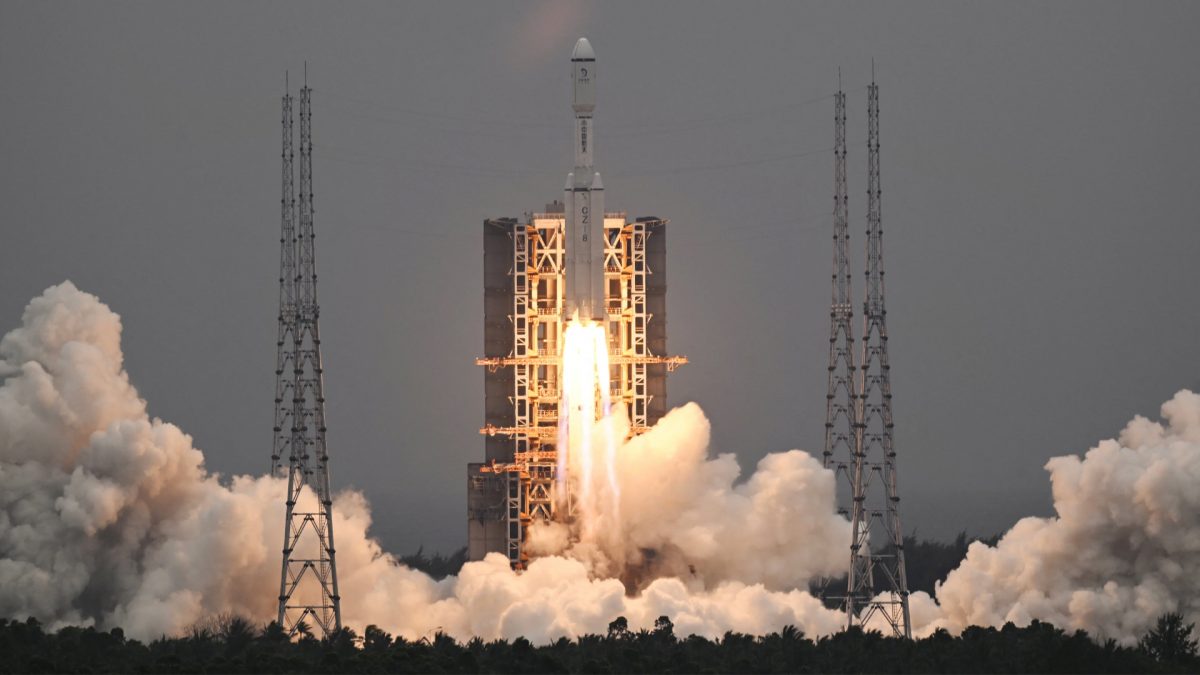China continues to add feathers to the cap that is its space exploration and colonisation efforts. Marking a major milestone in space exploration, the Chinese space agency or the China National Space Administration successfully launched an uncrewed spacecraft on a nearly two-month mission to the Moon.
Called Chang’e-6, the objective of the mission is to collect rocks and soil samples from the far side of the Moon. The 8-ton Chang’e-6 probe was launched using the Long March-5, China’s largest rocket, which took off from the Wenchang Space Launch Center in Hainan.
Chang’e-6 and its mission objectives
Chang’e-6’s primary objective is to land in the South Pole-Aitken Basin on the Moon’s far side and retrieve samples. Neil Melville-Kenney, a technical officer at ESA, emphasized the enigmatic nature of the dark side of the Moon, which has been explored only through robotic probes.
The launch is a significant achievement in China’s lunar exploration program, with Pierre-Yves Meslin, a French researcher, commending China’s rapid progress in space exploration.
Previous missions, such as Chang’e-4 and Chang’e-5, have already marked major milestones for China, including its first unmanned Moon landing and the retrieval of lunar samples.
Once on the Moon, Chang’e-6 will be collecting samples that weigh about two kilogrammes before returning to Earth. The actual window during which the Chang’e-6 probe can collect the rocks will be about 14 hours long, which will be spread over a period of 24 hours
The mission aims to provide valuable insights into the Moon’s geological history, with a focus on the South Pole-Aitken Basin.
Payloads from Pakistan and other countries
Although the launch was attended by scientists and officials from various countries, including France, Italy, and Pakistan, no US organizations participated due to legal restrictions.
Impact Shorts
More ShortsChina’s Chang’e-6 mission is set to carry payloads from various international partners, showcasing the collaborative nature of space exploration. Among the payloads onboard Chang’e-6 are contributions from France, Italy, Sweden, and Pakistan. Similarly, for the upcoming Chang’e-7 mission, payloads from Russia, Switzerland, and Thailand will be included.
Pakistan’s payload is particularly interesting. The iCube Qamar, on board China’s Chang’E6 is Pakistan’s first satellite mission to the Moon. The satellite has been designed and developed by the Institute of Space Technology (IST) in collaboration with China’s Shanghai University and Pakistan’s national space agency SUPARCO.
The primary purpose of iCube is to take photos of the Moon’s surface and relay them back to Pakistan so that they have their own images of the lunar surface to study. Once the probe is in lunar orbit, which will be about five days from the day of the launch, it will circle the Moon for a period of three to six months.
China’s colonisation plans
Chang’e-6 is part of China’s long-term plan to establish a permanent research station on the Moon, known as the International Lunar Research Station (ILRS), in collaboration with Russia.
The mission also underscores China’s growing capabilities in space technology. The Long March-5 rocket is known for its reliability and robustness and has played a crucial role in China’s space endeavours over the years. By successfully launching Chang’e-6, China has demonstrated its ability to execute complex missions beyond Earth’s orbit that too with a considerably conservative budget.
Furthermore, the scientific significance of Chang’e-6 cannot be overstated. By retrieving samples from the Moon’s far side, researchers hope to gain new insights into lunar geology, evolution, and potential resources. The South Pole-Aitken Basin, in particular, is of great interest due to its unique geological features and pristine lunar material.
Despite geopolitical tensions and regulatory barriers, China remains committed to advancing its space exploration agenda. The country’s ambitious lunar program reflects its long-term vision for space exploration and scientific discovery.
(With inputs from agencies)
)